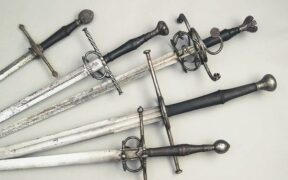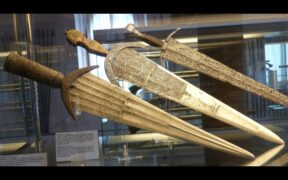Our content features commercial links to our products, committed to transparent, unbiased, and informed editorial recommendations. Learn More
18 Asian Swords Types and Where to Buy Them
NO AI USED This Article has been written and edited by our team with no help of the AI
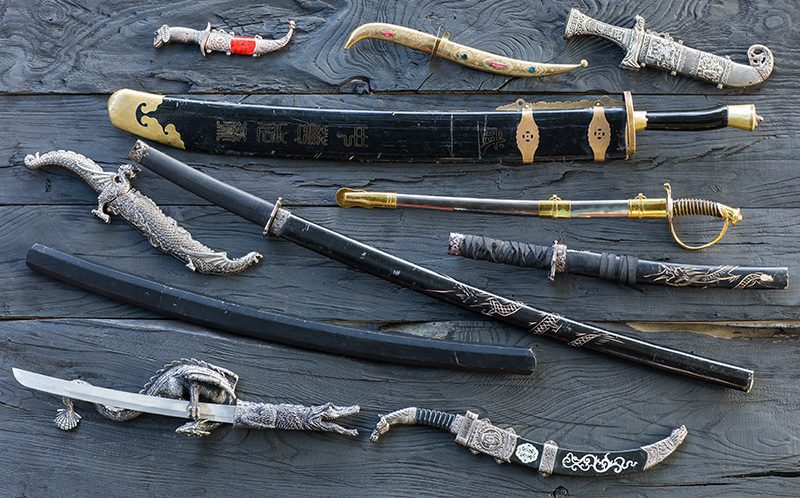
Asian warriors used different types of swords to win military battles and indicate social status. In the 16th and 17th centuries, swords helped to change the course of large-scale wars throughout Japan, China, Korea, and Southeast Asia. In the 18th century when swords became less important as infantry weapons, the cavalry continued to use them in combat, especially in China and India.
If you’re looking for a piece to add to a collection, we rounded up the different types of swords in Asian cultures, as well as a few recommendations where you can get them.
Katana (Japan)
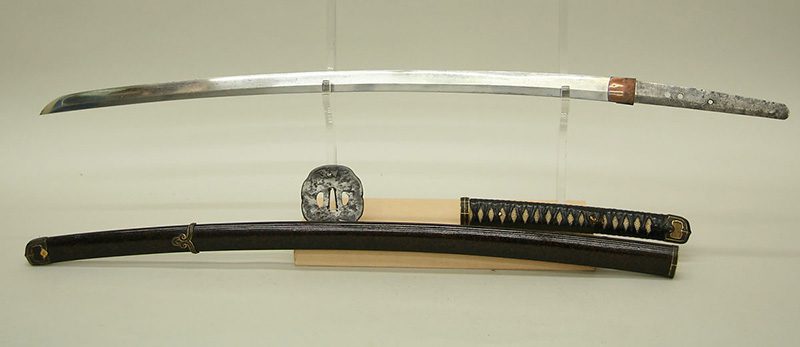
The most widely collected Asian sword is the Japanese katana because of its association with the samurai, the noble warriors who served Japan’s feudal lords. Curved and single-edged, the samurai
During the Sengoku Period, from 1467 to 1615, the katana was one of the preferred weapons of combat. Japan continued its fine tradition of
Wakizashi (Japan)
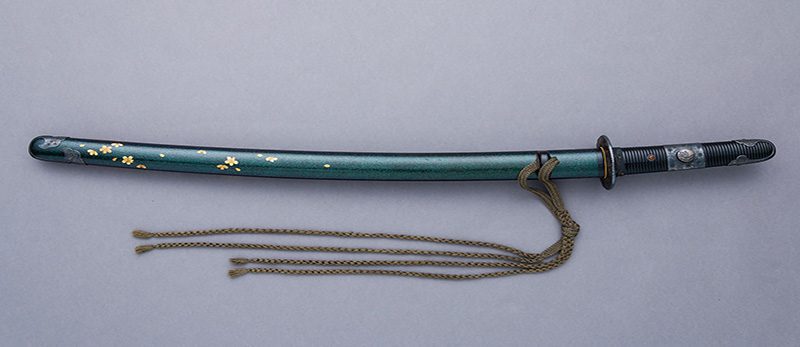
During the Edo period in Japan, the samurai started wearing the sword set called daisho, consisting of a short
The daisho often had matching mountings, such as the tsuba or
Tachi (Japan)
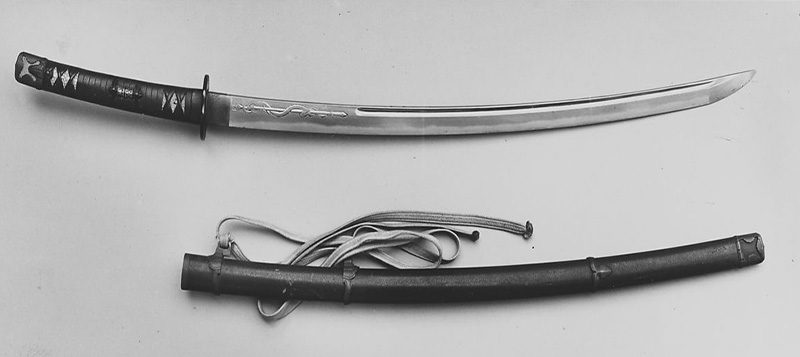
The first
Ninjato (Japan)
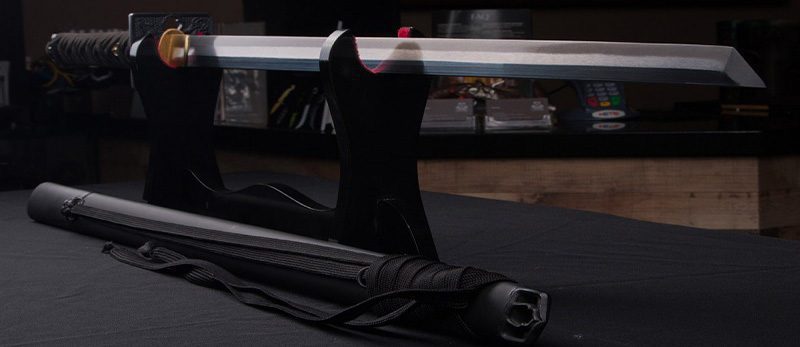
Any sword that belonged to a ninja is traditionally referred to as ninjato. Unlike the high carbon steel blades of the samurai, ninja swords were often converted from the abandoned swords found on the battlefield. Since these assassins needed to keep a low profile, they generally used straight and short swords. Also, the saya or scabbard was often longer than the blades and was used to store blinding powders and other useful tools for combat.
The term ninja has been attributed to the Japanese semi-legendary prince Yamato Takeru, often portrayed in paintings holding a short, straight-edged blade similar to the modern ninjato blade. The origins of the ninjas are lost in legend, but there are lots of anime that create their own mythology to represent these assassins and mercenaries in different ways.
Iaito (Japan)
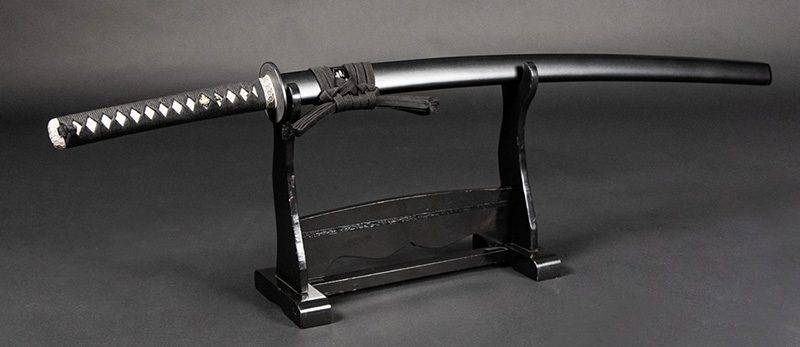
Used in Japanese martial arts iaido and iaijutsu, the iaito is a blunt katana commonly made of aluminum alloy rather than stainless steel. Generally, aluminum alloy swords are lighter than steel and incapable of being sharpened. Most iaito are full tang blades and weigh similar to that of a real Japanese sword. However, the length of the blade usually depends on the practitioner and schools.
Jian (China)
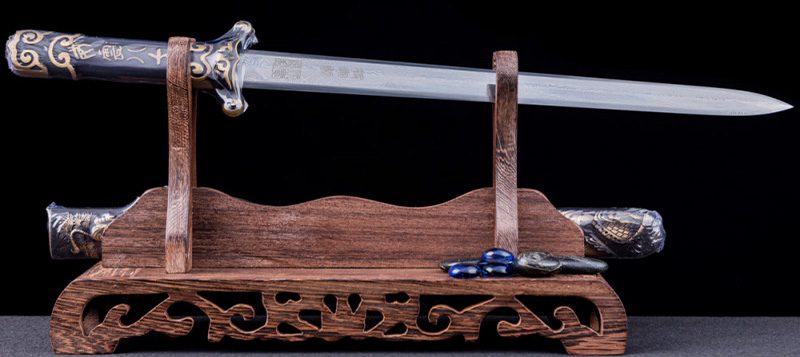
The earliest Chinese swords were straight and double-edged, called jian. Early jian were made of copper and produced during the time of Huang Di, the Yellow Emperor, who began to rule in 2697 BCE. The Chinese
Chinese swordsmen used the straight, double-edged jian swords as one of their main weapons. Even if the declining Qing Empire in the 19th century was trying to develop firearms to match those of the European armies, the jian continued to be in use as weapons. High officials also incorporated it as part of their ceremonial regalia. Today, jian swords vary in design, hilt, and decoration.
Dao (China)
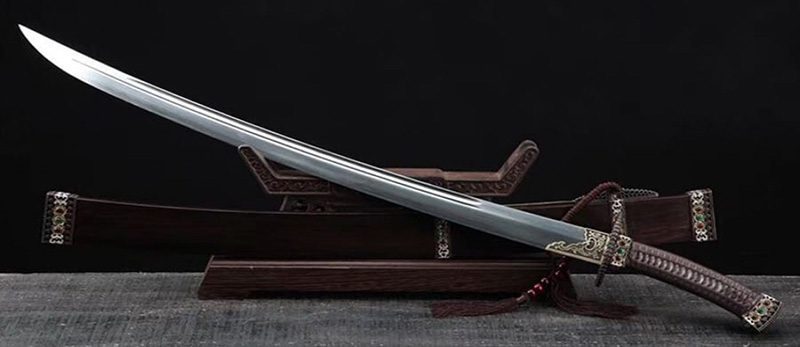
The single-edged Chinese swords or dao can be traced back as far back as the late Han dynasty, from 206 BCE to 220 CE. Primarily a cavalry weapon, the Chinese warriors used the dao for slashing and its point for thrusting at an opponent. Even if the straight-bladed jian was the more popular of the two, the curved dao was more practical and easier to use.
The Chinese blade was made of multiple layers, in which the core of hard steel was sandwiched between layers of softer steel. The dao swords were generally curved, but their blades evolved into a variety of forms, with others featuring a deep curve known as liuyedao. Some short dao featured a near-straight blade known as yanmaodao and was used until the 20th century.
Dadao (China)
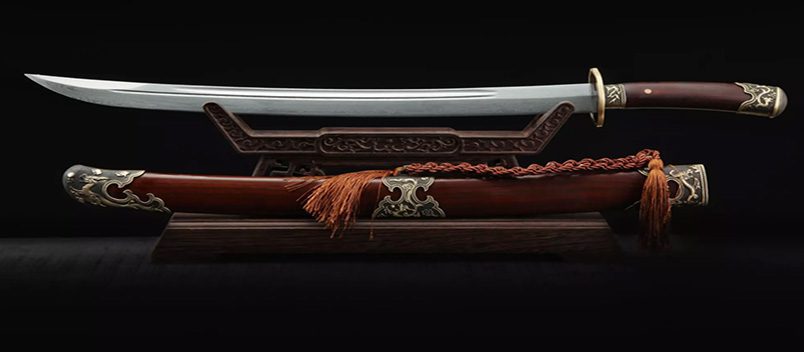
One of the varieties of dao, the dadao swords have broad blades and long hilts, designed to be used with both hands. Also, their blades come in many different shapes, such as large, cleaver-shaped blades. Although the Chinese
The dadao were commonly associated with revolutionaries and civilian militias, and functioned as an effective close combat weapon for untrained troops. While these oriental swords were impractical to use, the Chinese soldiers used them during the Second Sino-Japanese War, from 1937 to 1945.
Tai Chi Sword (China)
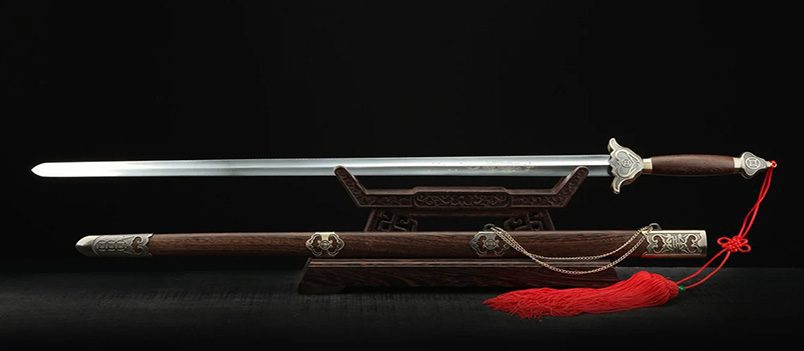
Also spelled taiji, the tai chi generally refers to swords used in the Chinese martial arts taijiquan or tai chi chuan. However, there was no specific type of sword designed for taijiquan, as practitioners used the functional
Today, there are many different types of weapons that can be practiced with tai chi chuan, including the tai chi saber or broadsword and the tai chi jian. Generally, a broadsword has a broad blade, so it is used for focusing on powerful and vigorous movements. On the contrary, the tai chi jian is designed for light and agile movements.
Hwando (Korea)
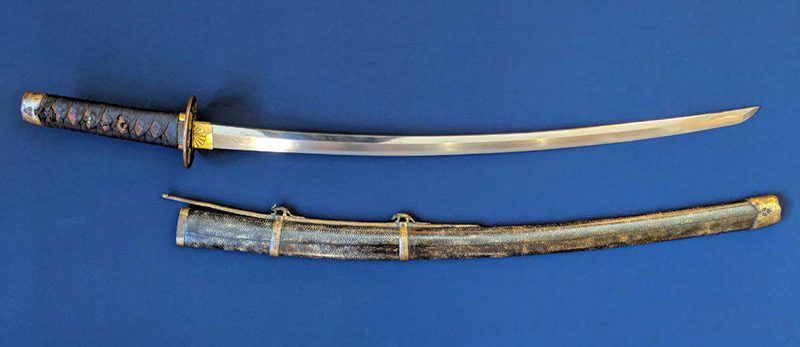
During the Chosŏn dynasty, from 1392 to 1910, soldiers used the hwando or single-edged
Kilij (Turkish)
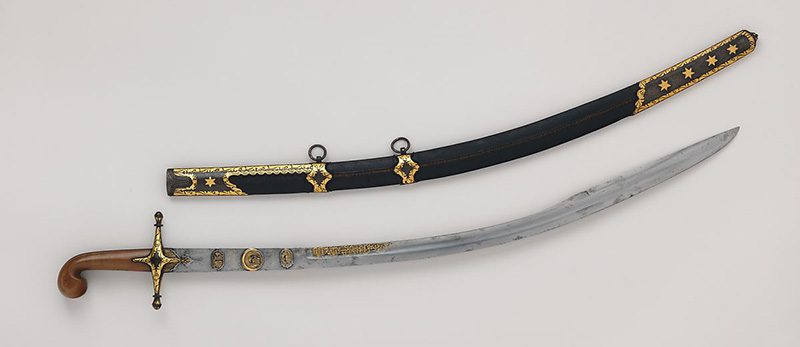
The Ottoman Empire was founded by Turks who migrated to Anatolia—now in Turkey—from Central Asia. From the 14th to the 19th centuries, the Ottoman warriors used the kilij, the curved
The kilij has a highly curved blade, so it often had specially adapted scabbards with a slot cut into the back, covered with sprung steel, making it easier to draw. Also, it has a rounded hilt and crossguard that reinforces the blade. Ottoman soldiers often aimed strikes at the face, skull, and neck of the enemy while on horseback to add power. Europeans called these swords scimitars, a term used to collectively refer to curved Asian swords.
Yataghan (Turkish)
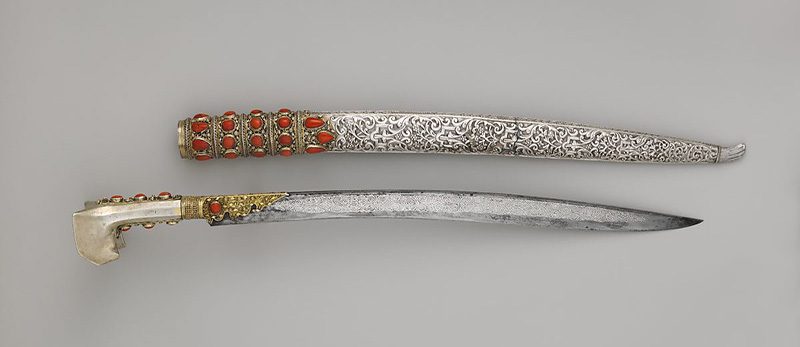
In the 18th and 19th centuries, the yataghan, also spelled yatagan, served as sidearms for the Turkish military. It has a forward-curving blade called kopis and a hilt without a guard. Sometimes, it featured flared wings at the pommel and was carried in the waistband.
Ottoman sultan’s swords were often crafted from precious materials and had lavish ornamentations, such as a dragon and a phoenix.
Shamshir (Persia)
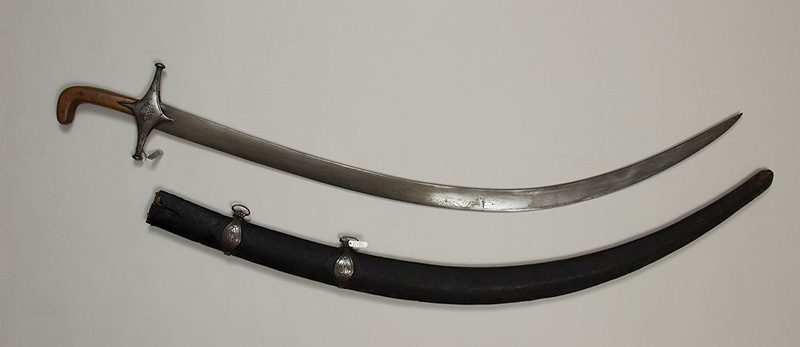
Persian craftsmen were also acknowledged as masters of
In the 16th century, the shamshir came to India from Persia—now modern Iran. Generally, a saber or sabre is a long, single-edged cutting
By the 19th century, the shamshir can be found in Turkey and other parts of the Islamic world. They are often decorated with silver or gold in-lay work, scrollwork, and religious text.
Talwar (India)
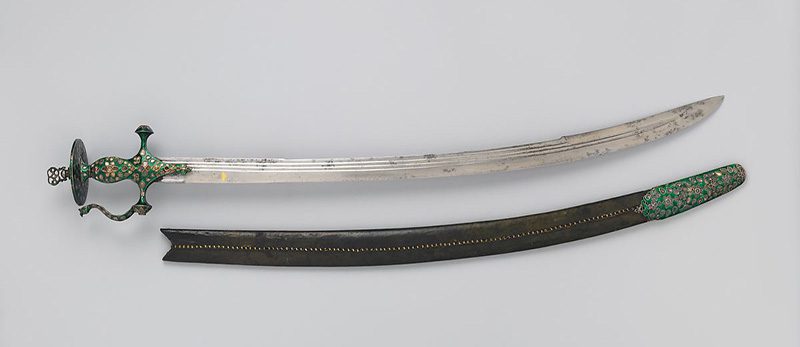
In the 16th century, the establishment of the Mogul empire in India paved the way to fine curved swords found throughout India, Sri Lanka, and the Islamic world. One of them was the talwar with a deeply curved blade, a traditional Indian style. The term talwar originated from the Sanskrit word taravari, meaning one-edged
However, earlier talwar had more shallow curves than those of swords produced later in the Mogul period. Generally, its blade is wider than the shamshir. Most swords have blades similar to those of the saber, but some also feature double-pointed tips called zulfikar. It is even suggested that the talwar may have influenced the design of the British sabre.
In the late 18th century, the talwar was also used in Mysore during the wars between the British and the rulers of Mysore. British officers even noted the superior quality of the
Kukri (Nepal)
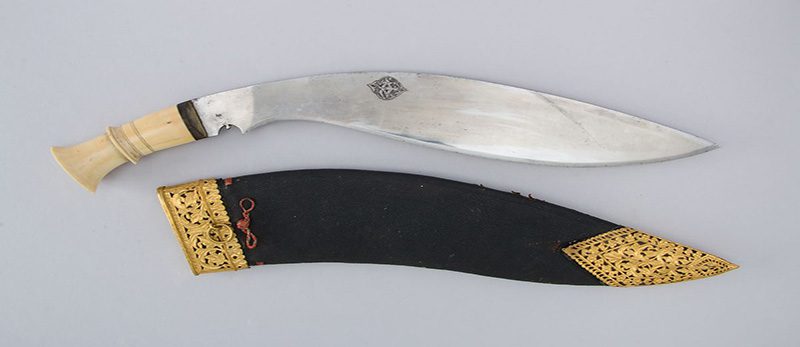
In the 19th century, the Nepalese Gurkha warriors used the kukri and fought alongside the British forces. Also spelled khukurī, the kukri is most recognized for its short, inwardly curved blade, which is effective for cutting through jungle undergrowth as well as in battle. While it is essentially a dagger or knife, the Gurkha warriors utilized it as a war
Due to its heavy weight and razor sharp blade, the kukri is capable of removing an enemy’s head and limbs in a single swipe. It is no wonder the Japanese, too, feared the Gurkha knife during World War II. Today, the kukri remains a traditional tool for Nepalese people and represents their history and culture.
Kasthane (Sri Lanka)
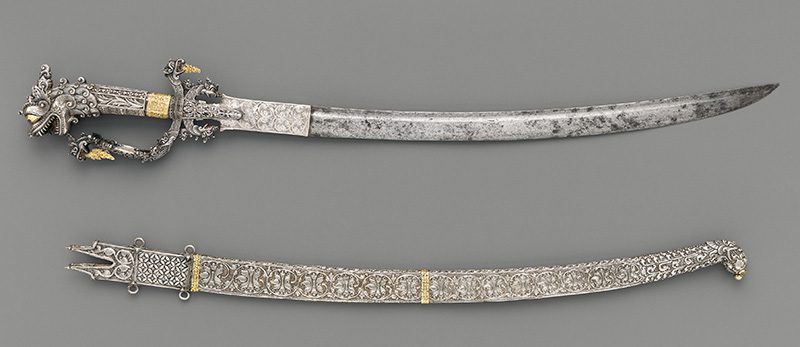
Short, heavy, and slightly curved, the kasthane was the characteristic
Bolo (Philippines)
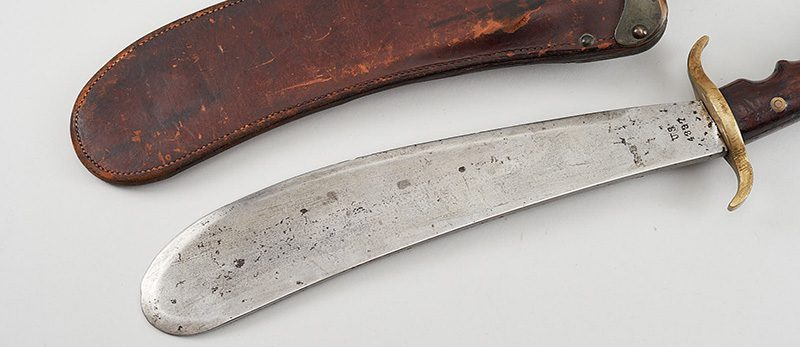
During the Japanese occupation of the Philippines, from 1942 to 1945, the revolutionaries utilized the bolo as a war
Bolos made of stainless steel may not be attractive pieces of cutlery, but they remain a practical tool in the household. It is also an all-purpose tool used for harvesting crops, clearing land, and butchering.
Kris (Indonesia)
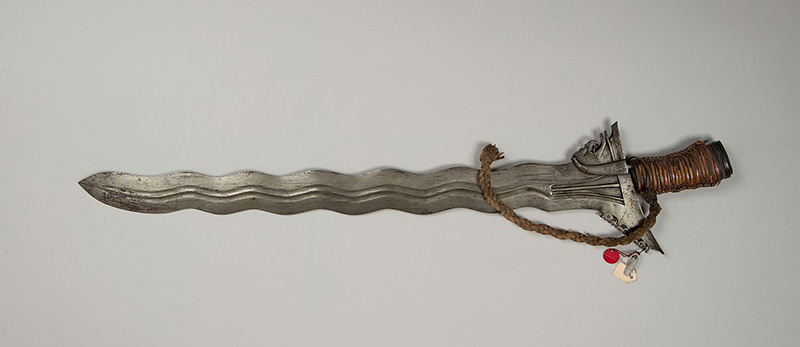
Both weapon and spiritual object, the kris or keris is most recognized for the wavy design of its blade. It originated from Java island in Indonesia and later became popular throughout southeast Asia. Unlike a classic straight
In Indonesia, the kris is forged by an empu, who was both swordsmith and spiritual teacher. It is no wonder that the oriental
Conclusion
By the 19th century, the
Today, Asian swords are highly valued for their history and craftsmanship.
